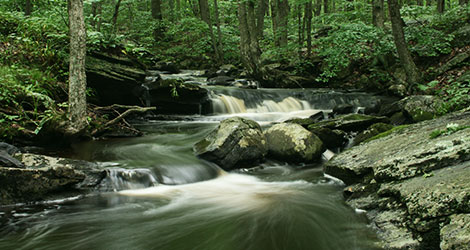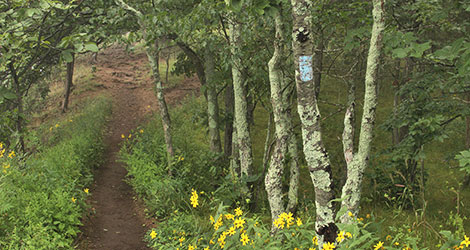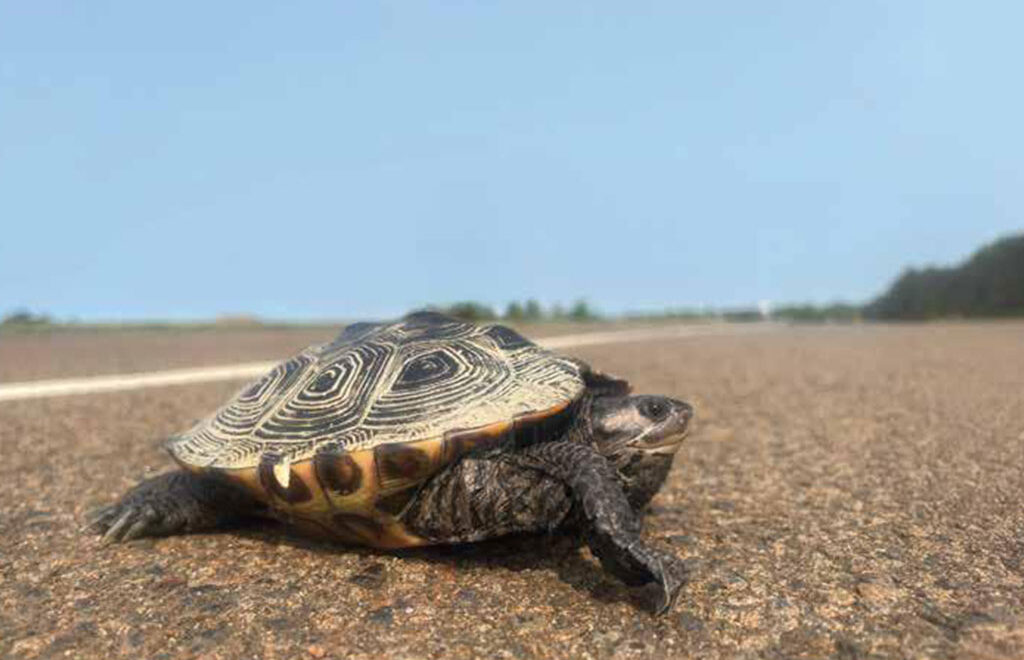
Why did the turtle cross the Road?
For the past five years, the Terrapin Tracking Project has monitored the movements of diamondback terrapin in Connecticut in the hope of better understanding how to protect these iconic creatures.
By Timothy Brown
Connecticut is home to hundreds of miles of coastal roadways that hug the shoreline of Long Island Sound. But what is a relaxing ride filled with stunning views of the water for people can be a deathtrap for wildlife. And they’re especially deadly for turtles such as the diamondback terrapin who lack the size and speed to quickly move out of harm’s way.
The diamondback terrapin (Malaclemys terrapin)— so-named for the plate, or scute, patterns on its shell, or carapace —is a native mid-sized turtle found in salt marshes from Cape Cod to the Gulf of Mexico. It is the only species of turtle that has evolved to live its entire life in estuaries where freshwater rivers meet the sea. But you won’t always find them swimming in the brackish waters. In late spring, pregnant females—which can be twice the size of males— haul themselves out in search of a sandy spot where they will lay upwards of 15 or more eggs before making the return trip. The eggs are left buried and unattended until early autumn when the hatchlings must make their way to the water.
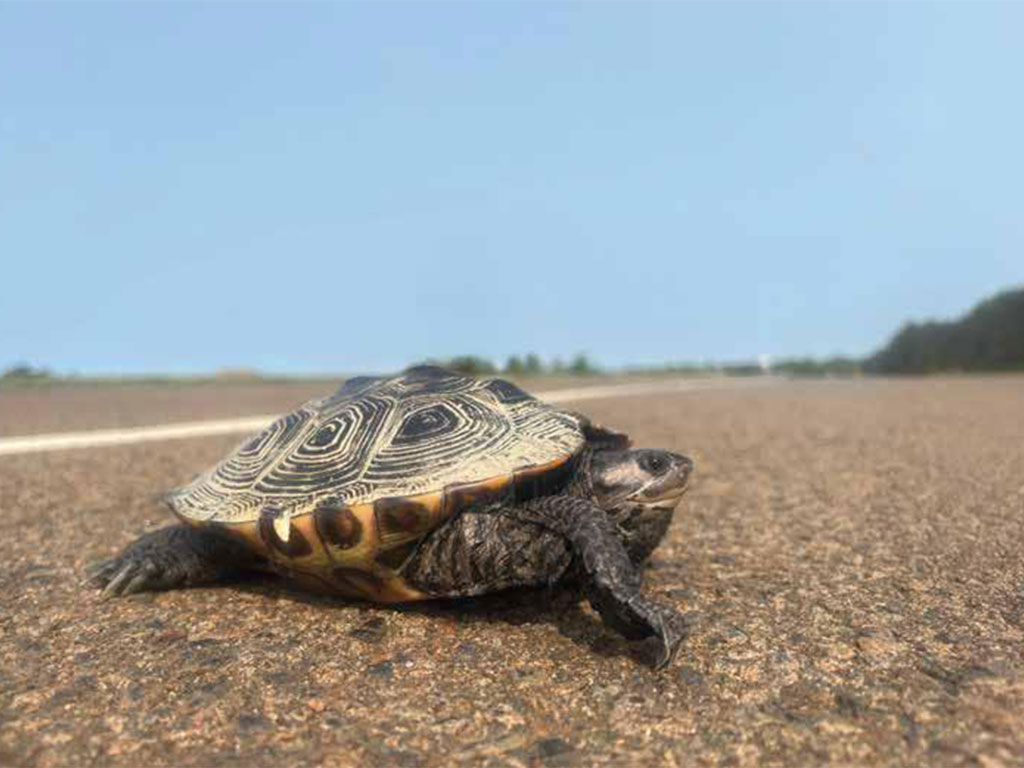
Photo by John Michael Arnett
It’s a perilous journey for both mom and her young. Each year, untold numbers of terrapins are struck as they cross coastal roadways. While opportunistic sampling of roadkill can reveal where a turtle has been hit, it doesn’t necessarily point to “hot spots”—places where roads bisect prime turtle nesting habitat resulting in a disproportionate number of turtles being killed.
Scientists are uncertain why terrapins choose a particular nesting site. Perhaps they are driven by instinct to places that have been used by generations of turtles. Or maybe other factors—temperature, for example—influence where a mother will decide to lay her eggs.
“It’s probably a little of both,” says Brian Hess, a wildlife biologist with the Connecticut Department of Energy and Environmental Protection (DEEP). “There has been success in creating new nesting habitat—it can work—so there is some plasticity.” But because only females make this migration, a single incident of roadkill can have a devastating impact. “Even if you lose a relatively small number, it can have an outsized impact,” he says. “You’re losing the most valuable individuals from that population.”
“It’s clear that there is some preference as to where they go,” echoes Theodora Pinou, a professor of biology at Western Connecticut State University (WCSU), whose research includes terrapins in Connecticut, where they are listed as a species of special concern. “Nests are not randomly distributed,” she says. “They seem to be in these pockets.”
The uncertainty surrounding the conservation status of terrapins in the state, including these migration hot spots, was the inspiration for the Terrapin Tracking Project, a unique partnership between DEEP, WCSU, and The Maritime Aquarium at Norwalk, which spearheaded the project.
“Our initial thought was a presence-absence survey for people to report finding terrapins, because at that time there really wasn’t much work being done in Connecticut,” says Bridget Cervero, education supervisor at the Aquarium who, amongst other duties, coordinates its volunteer community science program. But after contacting DEEP and WCSU in late 2019 as potential collaborators, the project’s focus began to shift to roadway mortality. “All the different partners had the idea to do something with terrapins,” Cervero says. “It was very much a collaborative effort.”
Cervero grew up going to the beach every day on Cape Cod but says she first learned about diamondback terrapins while working at the Aquarium where they act as animal ambassadors and are often used in educational programs. The Terrapin Tracking Project grew out of her passion for engaging members of the public as community scientists.
“Community science allows people to let their inner scientist free and have those hands-on opportunities,” she says. “I feel very lucky to be able to do this kind of work and to get people involved because that’s the first step in education.”
Cervero recruited and trained the volunteers how to collect data accurately and systematically, and in late spring 2020 the first community scientists ventured out along coastal roadways from Old Saybrook to Darien looking for the turtles. These community scientists, who ranged from college students to seniors, recorded the presence—or absence—of turtles, along with other vital information, such as temperature. Their data was then shared with DEEP and WCSU for further analysis.
“Because only females make this migration, a single incident of roadkill can have a devastating impact.”
Cervero insists that community scientists are indispensable for this type of landscape-scale, longitudinal research.
“They allow scientists to collect more information over a larger area and often for a much longer period of time. That’s where the value is—seeing those long-term trends. Without volunteers, that wouldn’t exist,” she says. “I think it’s such a beautiful benefit for the volunteers as well. It allows them to make that connection with nature, to appreciate what’s happening in their own backyards, and to have an actionable way to participate in conservation.”
In addition to professional biologists, Pinou’s graduate students have used data from the Terrapin Tracking Project to pursue their own research questions. For example, master’s student John Michael Arnett designed a mark-andrecapture study to better understand how roadkill affects population dynamics. Another student, Henry Schwendler, researched the relationship between nesting sites and temperature, a proxy for climate change. “Understanding the areas where the terrapin nest, what it looks like in terms of temperature distribution, might be the roadmap as to why they’re picking a specific area,” Pinou says.
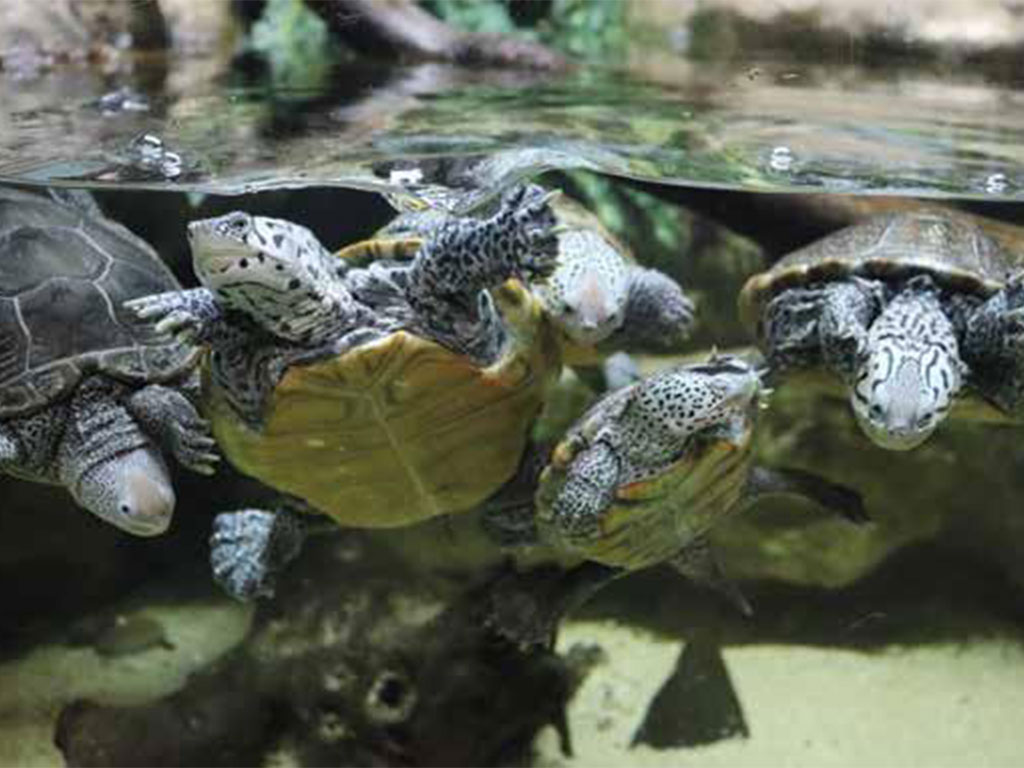
Photo courtesy of The Maritime Aquarium
While questions remain about terrapin hot spots in Connecticut and the reasons why the turtles choose a particular nesting site, Hess says there are steps we can take to reduce roadkill, such as signage that alerts drivers about migrating turtles or drift fencing that prevents them from crossing roads in the first place.
“In my mind, the best option is to improve the passage,” he says. While installing or improving culverts is a major operation involving multiple agencies, the Terrapin Tracking Project has provided important data about where to direct funding. “If DOT came to us today and said, ‘We have this money to apply to terrapin crossings, where would you like us to apply these funds to?’ We could point fairly easily, thanks to the data collected in this project, to a handful of sites that I think would be helpful.”
But cars aren’t the only hazard terrapins face. There’s habitat loss, sea level rise, and natural predation by foxes, raccoons, and other creatures. The turtles may also become entangled in abandoned fishing traps and nets and drown. But posting signs encouraging people to slow down or to clean up fishing gear could have unintended consequences, such as directing poachers straight to their nests. And conservationists are already fighting a robust black-market trade in North American turtles.
“By advertising (the turtles’ presence) you risk them being poached,” Pinou says. “It’s a small percentage of people, but even one person can destroy an entire population because they’re not just taking one or two, they’re removing hundreds.”
One poacher from Pennsylvania, for example, who had collected both hatchlings and adult turtles from the New Jersey shore, was caught with over 3000 terrapins in his garage. Wild terrapins are often illegally sold as pets, or occasionally as food.
“They are highly collectable, and very easily collectable,” says Hess, “so there’s a balance that you have to strike. You don’t want to attract too much attention to where these turtles are congregating and make them easy spots for people to come pick them up, but you also want to provide folks with knowledge. It’s a challenging balance to find.”
Removing diamondback terrapin from a salt marsh can have devastating tertiary effects. Their diet, which includes fiddler crabs, small fish, and periwinkle snails—voracious herbivores that will devour cordgrass—helps to maintain the health of the marsh, which itself buffers more inland habitats from destructive storms.
“These turtles are sensitive to a lot of threats that wildlife are facing in general. By addressing the needs of these turtles, we’re hoping to address the needs of other wildlife as well,” he says. “It is species-based conservation, but we’re trying to do it in a way that benefits other species.”
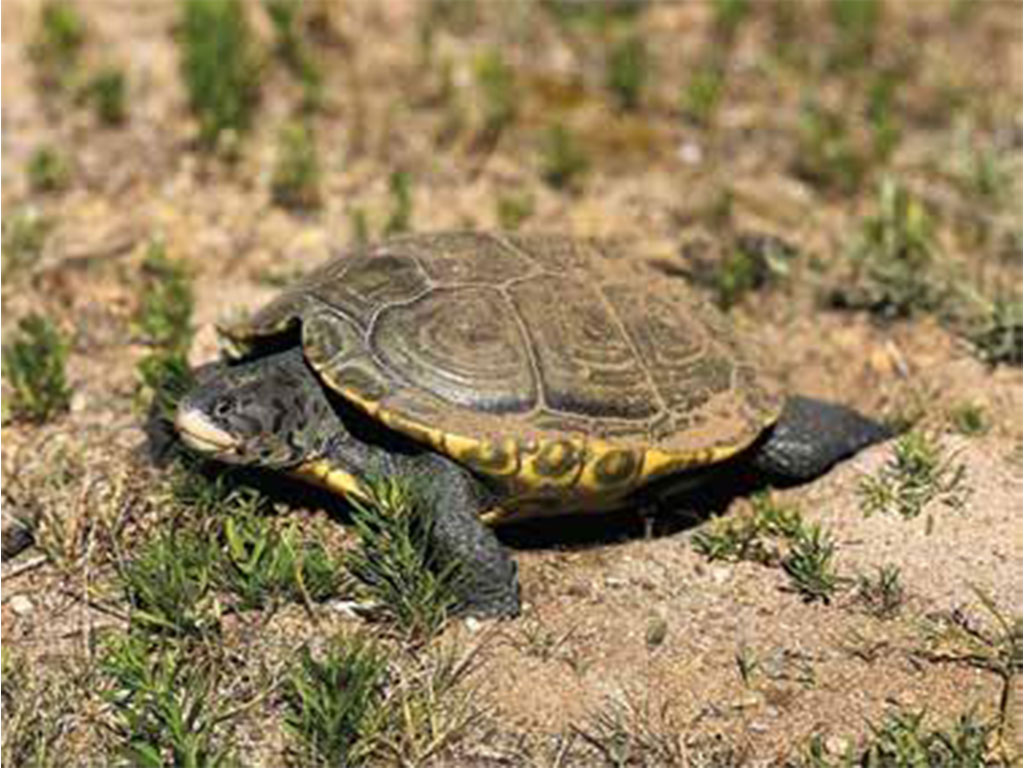
Photo by John Michael Arnett
Despite these threats, the project showed that terrapins are widespread throughout the Connecticut shoreline. “I wouldn’t say they’re coming back,” Hess cautions, “(but) we’re doing a better job of identifying where those hot spots exist.”
As the Terrapin Tracking Project winds down after five years, The Maritime Aquarium is shifting its focus and joining a regional terrapin conservation project managed by the Delaware Center for Inland Bays that will involve partners from Massachusetts to Virginia.
“It’s a head counting program. Volunteers will stand and just count terrapins,” says Cervero. “We’re all going to be doing the exact same work, so it’s going to be more valuable on a bigger scale. And we’re looking for living terrapins. The spots that we’ve identified for these sessions are all known for terrapin sightings, so in that regard, I think it’s going to be a little more exciting for the volunteers, too.”
The aquarium is also expanding its role in the community. Their new strategic plan—An Aquarium Without Walls— reinforces their commitment to the local community by working to address both environmental and social challenges and strengthening people’s connections to the natural world.
“We have a people-focused mission,” Cervero says. “The idea is thinking about ways we can connect, and projects like (the terrapin research) speak to that very well.”
Hess agrees that community-centered conservation is critical to saving endangered species and other environmental challenges. “The more that I do this job, I realize that it’s really about creating and managing relationships with people,” he says. “It’s what makes progress happen.”
Timothy Brown is the editor of Connecticut Woodlands.

